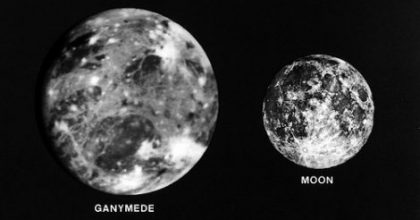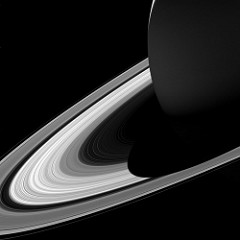
 )
)Was Galileo more lucky than right? I kept wondering about that as I read “Galileo, the Church, and the Cosmos” from When Science and Christianity Meet. Galileo was a champion of the heliocentric model of the cosmos, which ran counter to both well-established science and the prevailing doctrine of Catholic theologians. The alternative geocentric model, and more specifically the cosmology of Ptolemy and Aristotle, has long since fallen out of favor with both scientists and Christian scholars of all stripes. So of course that vindicates Galileo retroactively, right?
Moving ahead with our book club discussion and forward in time, this week we have another essay from David Lindberg on the (in)famous case of Galileo and the Inquisition. Last week I noted how the introduction of the book emphasizes the human element; abstract ideas like “science” and “Christianity” only meet and potentially come into conflict or cohesion in the minds and conversations of people. Lindberg develops that theme here, highlighting the role that Galileo’s personality and relationships played in his eventual trial. While I was familiar with some of the nuance Lindberg adds to the overly simplified and inaccurate narratives of “science vs religion,” “evidence vs faith,” and “free thinking vs dogma,” I did not know much about the man himself and his approach to making his case.
I was particular struck by Galileo’s appeal to populism and rhetoric. He published his ideas in a form that sounded more like the popular science books of today than more typical scholarly channels. Obviously as a blogger I have some sympathy for popularizing science and trying to reach a wider audience. But I also recognize that ideas usually have to pass muster within the scientific community before they are publicized. Certainly some scientists are quicker to bring their theories to the public than others, and I can see value in sharing speculative ideas on open questions in order to inspire younger readers to test them out or to form their own alternatives. I just hadn’t realized how much history there was to the public promoting of new scientific ideas, and how Galileo specifically contributed.
The other element of the story that stood out was that Galileo could have been wrong. I know that probably sounds unthinkable, since “Galileo Was Right!” is fundamental to our popular understanding of scientific progress. If science had an equivalent of the Nicene Creed to affirm, heliocentrism would certainly be included, as evidenced by its place in polls of basic scientific literacy. But on the merits of his case, based on what was known at the time, he could have been wrong. Or to put it another way, he may have wound up being right for reasons of mixed validity. Most notably, he employed the reasoning that evidence against Ptolemy’s model was evidence for his (or Copernicus’) model. But that’s not logically necessary; there are more than two possible models and as Lindberg notes, other geocentric models could explain that same evidence at least as well as the heliocentric model.

 )
)At the same time, the question of which body is at the center of the cosmos may not have been the most important one. Simply by turning the newly invented telescope to the heavens, Galileo opened up a whole new avenue for making observations and learning about the world we live in. He would see what no human had ever seen before, from the craters on the surface of Earth’s moon to the moons of Jupiter and the rings of Saturn. Generations of astronomers after him, using ever more powerful telescopes, would see even more, eventually revealing that neither the sun nor the Earth are the center of the cosmos. As the Bible is not an exhaustive astronomical catalog, it is perhaps inevitable that such observations, by virtue of being beyond the common experience or even capability of the Biblical writers, would reveal details not revealed in its pages.
Galileo also contributed to our understanding of how to incorporate those new observations into a Biblical theology. That aspect of Galileo’s work is not highlighted by Lindberg, but you can read more about it in this blog post by historian Ted Davis. Lindberg does stress that Galileo was also a faithful Catholic believer who cared about proper Biblical interpretation. His approach follows in the tradition of Augustine which we discussed last week, enabling him to built on established theological principles to fold his new observations into a Biblical understanding of the cosmos.
And yet he still ran afoul of the Catholic Church and more specifically Pope Urban VIII. In that respect, he was unfortunate to be promoting a heliocentric cosmos at a time when the Church was adopting stricter interpretative stances in response to the Reformation and at a place so close to Rome. Other scholars of science and theology, including Copernicus, had talked and written about sun-centered models without interference from the Church. Lindberg proposes that at least some of Galileo’s troubles were exacerbated by his personality and how he managed his relationships. It appears another factor was simply a happenstance of being in the wrong place at the wrong time.
That leads me to my discussion topic for this week. How comfortable are you with the role of chance in the study of history? There is a tendency, perhaps even a temptation, to imagine history as intersecting trajectories shaped by abstract forces (not unlike the movements of heavenly bodies) or maybe even the choices of powerful individuals. Such analysis makes the outcomes seem inevitable and holds forth the promise of being able to predict future developments. It seems harder to allow for chance, not least because we only have one sequence of events to examine. Should we make the effort to consider it, or should we focus on processes that we can understand? How does our understanding of God and his interaction with creation factor into that discussion?
Come back next week for Chapter 3, “Christianity and the Mechanistic Universe.” And next Wednesday at 7:30pm Eastern, we’ll have our first video chat to talk through these first chapters. I hope to see you there!
Andy has worn many hats in his life. He knows this is a dreadfully clichéd notion, but since it is also literally true he uses it anyway. Among his current metaphorical hats: husband of one wife, father of two teenagers, reader of science fiction and science fact, enthusiast of contemporary symphonic music, and chief science officer. Previous metaphorical hats include: comp bio postdoc, molecular biology grad student, InterVarsity chapter president (that one came with a literal hat), music store clerk, house painter, and mosquito trapper. Among his more unique literal hats: British bobby, captain’s hats (of varying levels of authenticity) of several specific vessels, a deerstalker from 221B Baker St, and a railroad engineer’s cap. His monthly Science in Review is drawn from his weekly Science Corner posts — Wednesdays, 8am (Eastern) on the Emerging Scholars Network Blog. His book Faith across the Multiverse is available from Hendrickson.

Leave a Reply